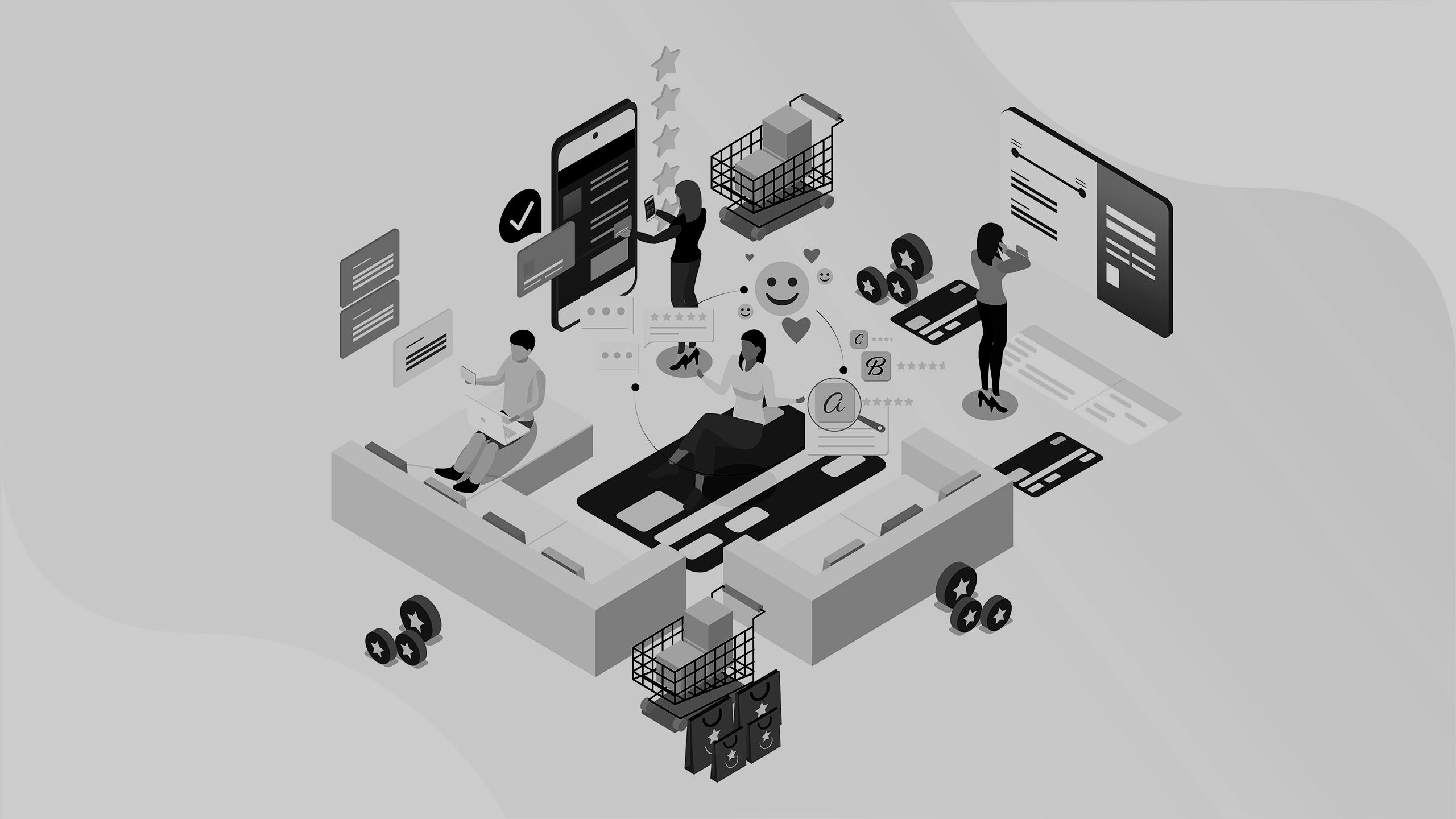
Evolving Customer Experience in Financial Services: Insights from the CXFS Summit
November 9, 2023
Laura Richard, Principal at Level5 Strategy recently participated in the annual Customer Experience for Financial Services (CXFS) Summit in Toronto, including hosting a fireside chat titled ‘Mapping the Customer Journey for an Improved Customer Experience’. The conference aims to bring together CX experts from across North America to discuss strategies and solutions to advance CX in the financial services sector.
Below, Laura details core themes and important takeaways from the conference.
I recently had the pleasure of participating in the Customer Experience for Financial Services conference, including sharing the stage with Level5 client Kathleen Kresky from Gore Mutual to discuss Customer Journey Mapping. While the context of this conference may have been specific to the financial services industry, the themes I highlight from the conference have broad applicability, offering guidance to any organization striving to create meaningful customer experiences.
Organizations early in their Customer Experience journey can all benefit from starting with foundational components of Customer-Centricity
Unsurprisingly, the conversations I was part of at CXFS indicated that organizations in the Financial Services sector are at varying stages of maturity when it comes to customer centricity. It was challenging for those lower on the maturity scale to pinpoint exactly what they should be focusing on when listening to those who have been at this work for some time. Moving from the theoretical to the tangible and practical, these are some of the most important foundational concepts to start with.
- The Importance of Journey Mapping. Journey mapping should be considered as strategic foundational research that informs customer journey design and management. It helps create a visual end-to-end map of customers’ interactions with your organization. And it provides insights into Moments of Truth—the most critical make-or-break touchpoints that have the greatest impact on overall experience and customer loyalty. Delivering exceptional experiences at every touchpoint can be costly and may not deliver an optimal return on investment — in fact, Level5 research shows that it is better to simply meet expectations in most areas and go above and beyond only where it matters most. The importance of conducting journey mapping can’t be overstated, as this will provide guidance into where you should invest time and resources to deliver exceptional experiences.
- Customer Experience isn’t a siloed discipline. Your organization has set up a Customer Experience team – this is exciting! It can be tempting to jump right in by mapping the journey and developing initiatives that will improve the customer experience in the moments that matter most. While tempting, this won’t yield the best results, as customer-centricity needs to involve a breadth of stakeholders across your organization and engaging them from the early stages will generate better outcomes. Lizzie Pine, Executive Director and Head of CB Commercial Card at JPMorgan Chase shared a great, step-by-step account of how she engages experts across her organization in designing improved journeys:
- First, she starts by getting everyone who will be impacted in a room to share the vision and desired outcome for the program. This provides an opportunity for stakeholders to ask questions and gets early buy-in to what the team is collectively working to achieve. They leave the room knowing that the design team is taking the lead but that they will be consulted where their expertise is required or where their work will be impacted.
- The team leading customer experience next does the work to map the journey through the lens of the customer, documenting in tandem the accountabilities and necessary processes and enabling technology requirements to deliver. Counsel is sought from functional experts in the context of the experience the team is striving to deliver.
- At the end of the exercise, everyone comes back together to review and sign-off on the ‘to-be’ customer experience. Because functional leaders have been engaged in designing the future state, there is buy-in and commitment to owning the work their teams will be responsible for delivering to reach the desired outcome.
This approach highlights two things that our experience has proven critical to driving customer-centricity in organizations. The first is the need to understand the underlying roles, accountabilities, and processes necessary to deliver each customer experience. And the second is the value of having strong, well-governed approaches to cross-functional collaboration in place.
Practitioners are struggling to capture and communicate the importance of emotion in Customer Experience
One of the valuable sessions during CXFS was facilitated roundtables. The summit organizers did a great job of pre-populating eight topics, and allowed participants to select the theme most applicable to their needs. I had the pleasure of moderating a discussion on Emotional Science with a dynamic group of leaders from Financial Institutions, Wealth Management firms, Credit Unions and Service Providers. Across these organizations, Customer Experience leaders were all struggling to quantify the importance of understanding and delivering on emotional drivers throughout the customer journey—insight that is often collected through qualitative research. This didn’t surprise me in the least – while brand and customer experience practitioners typically have a sharp understanding of the role and impact of emotional connection, these concepts are more foreign to others on executive teams. To address this common challenge, something that we have found very successful is to leverage quantitative approaches to understand the emotional drivers of engagement and loyalty, where in the journey customer emotions are most likely to be experienced, and how they impact key metrics such as customer satisfaction or Net Promoter Score (NPS). With this understanding, building models and connections that quantify the outcomes of delivering on emotional drivers closes the loop in creating clear, defensible rationale for focusing on emotional science in customer experience.
Omnichannel is compelling but costly; alternative ways to think about cross-channel Customer Experience
There was a lot of interest and discussion on omnichannel; experiences that allow customers to interact with a brand and move seamlessly between platforms without disruption. While there is no doubt that this offers unparalleled convenience and satisfaction for customers, the implementation of a full-fledged omnichannel strategy can be a costly and complex endeavor. Managing real-time data synchronization and technology infrastructure integration can strain resources and create logistical challenges. While investment in omnichannel may be justified for some organizations, for most, a multi-channel strategy is more appropriate and achievable at this moment in time. This approach focuses on maintaining a strong presence across key customer touchpoints, rather than integrating every possible channel. By carefully selecting and optimizing a handful of channels that are most desirable for customers at the relevant touchpoints, brands can offer a comprehensive customer experience. Then, by leveraging advanced analytics and automation tools to streamline customer interactions and improve personalization, organizations can reduce the burden on human resources to create an improved customer experience.
Technology is advancing rapidly. It is easy to feel like you’re constantly playing catch up, and as a result, critical for organizations to have a way of cutting through the noise
Speaking of advanced analytics and automation tools, we saw and heard about a number of innovative technologies during CXFS, and this was just scratching the surface of what is available to organizations looking to improve their customer experience programs. So where do you focus and what makes for a good investment in technology-driven customer experience improvements? By consistently listening to, and understanding, the needs of your target audience, organizations can tailor their technology investments and innovation focus to deliver experiences that resonate with customers and deliver return on investment. Kathleen Kresky, VP Operations at Gore Mutual, shared in our fireside conversation a decision Gore made to not invest in an app. Through customer journey mapping, the organization’s leaders learned that the driver of a good claim experience was talking to a person who exhibited empathy and guided the claimant through the steps of this stressful situation. At the time, Gore’s telephony system did not have a way of prioritizing new claim calls, which led to long waits on hold for customers. Instead of prioritizing costly app development, Gore Mutual focused on an improved telephony system and training for adjusters to deliver the claim experience customers are looking for.
Events like CXFS are valuable for organizations regardless of their maturity level in customer experience
The CXFS Summit unpacked many vital strategies for enhancing customer experience in financial services. Insights and conversations from the conference revealed the need for a deeper understanding of the intricate balance between customer emotions, technology, and organizational collaboration. These types of events are beneficial to engage in, to hear from leaders and converse with peers who are facing similar challenges and scenarios.
For tailored support in advancing your customer experience initiatives, connect with Laura Richard.



